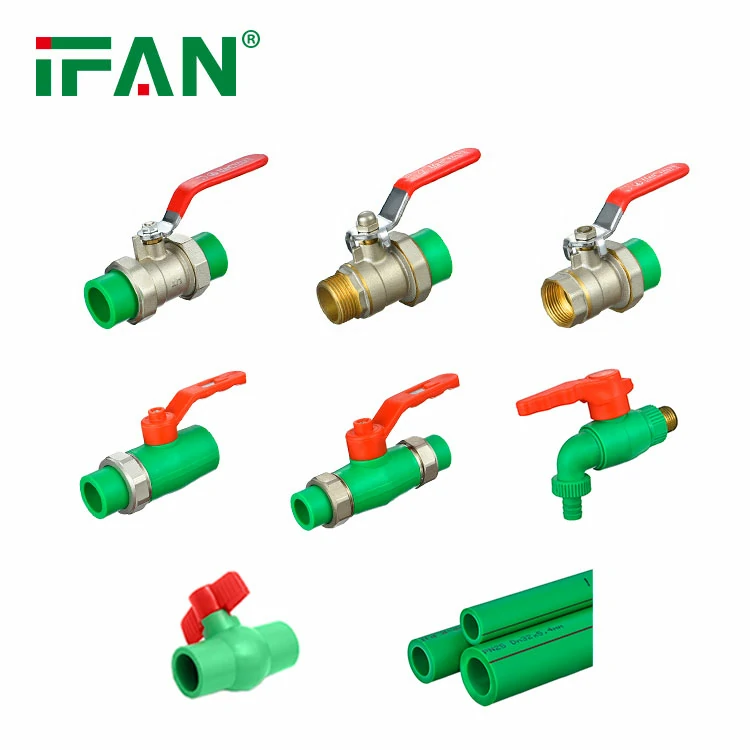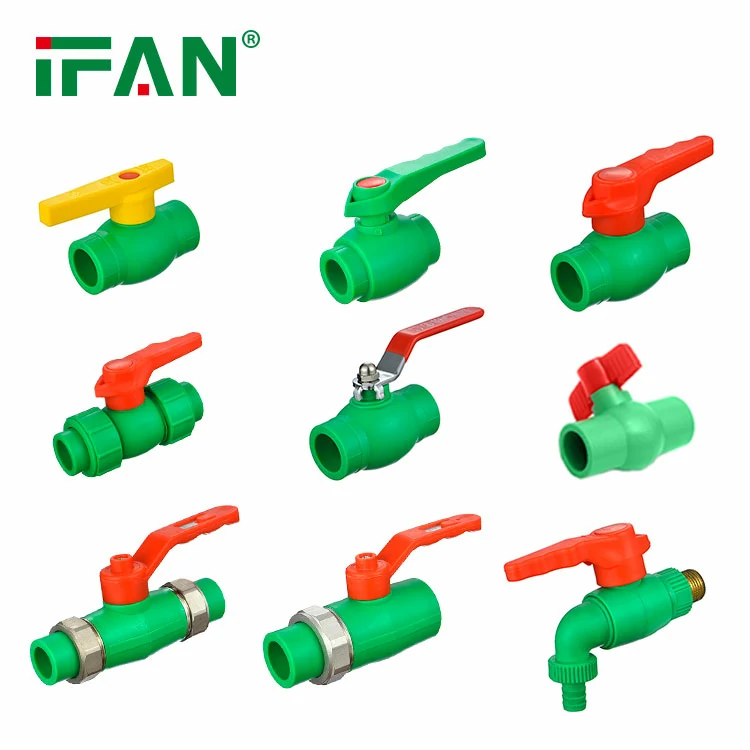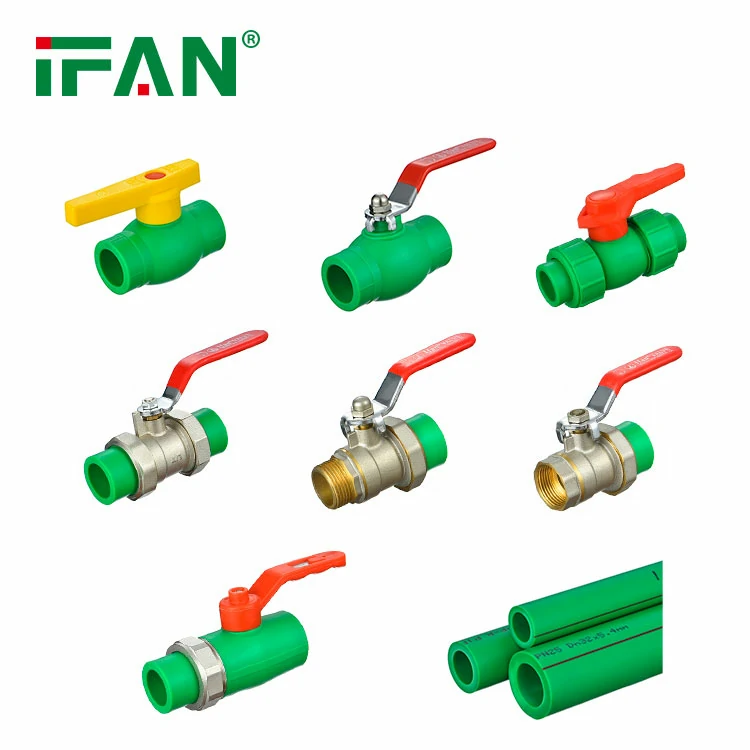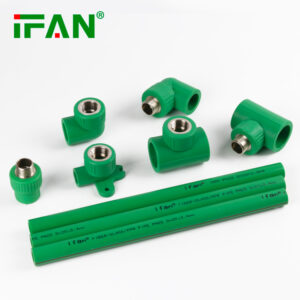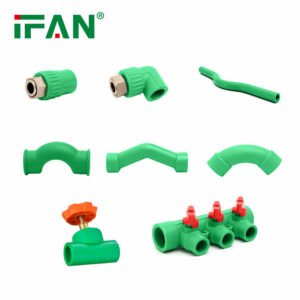Description
IFAN factory 30+ years manufacture experience support color /size customization support free sample.Welcome to consult for catalog and free samples.This is our Facebook Website:www.facebook.com,Click to watch IFAN’s product video.Compared with Tomex products, our IFAN products from quality to price are your best choice, welcome to buy!
In recent years, PPR fittings have become a game changer in the plumbing industry. These versatile and durable fittings are making waves as a preferred alternative to traditional materials like PVC and copper. From residential homes to industrial applications, PPR fittings offer a multitude of benefits that are revolutionizing plumbing systems worldwide. In this article, we will explore why PPR fittings are gaining popularity, the advantages they offer, and how they are changing the future of plumbing.
What Are PPR Fittings?
PPR fittings are plumbing components made from Polypropylene Random Copolymer (PPR), a type of plastic known for its durability, resistance to high temperatures, and excellent performance in both hot and cold water systems. These fittings are commonly used to connect PPR pipes in various plumbing systems, offering a cost-effective and reliable solution for residential, commercial, and industrial plumbing needs.
Types of PPR Fittings
There are several types of PPR fittings, each designed for specific applications. The most common types include:
– Elbows: Used to change the direction of piping.
– Tees: Used for branching off pipelines.
– Couplings: Used to connect two pieces of pipe together.
– Adapters: Used to connect PPR pipes to different types of plumbing materials.
These fittings are designed to work seamlessly with PPR pipes to create a tight, leak-proof system.
Why PPR Fittings Are Revolutionizing Plumbing
1. Superior Durability and Longevity
One of the most significant advantages of PPR fittings is their superior durability. Unlike traditional plumbing materials such as copper or steel, PPR fittings do not corrode, rust, or degrade over time. This means that plumbing systems using PPR fittings can last for decades without requiring constant maintenance or replacement. The corrosion resistance also ensures that water remains clean and uncontaminated, which is particularly important for drinking water systems.
2. Cost-Effectiveness
Although the initial cost of PPR fittings may be slightly higher than other plumbing materials, they are a cost-effective solution in the long run. PPR fittings require minimal maintenance and are highly resistant to damage, reducing the need for frequent repairs or replacements. This durability ensures that you get excellent value for your money over the life of the plumbing system.
Furthermore, PPR fittings are lightweight and easy to install, which can save on labor costs. The installation process is also quicker compared to traditional metal plumbing systems, which require welding or threading.

3. Ease of Installation
PPR fittings are easy to install, even for DIY enthusiasts. Unlike metal pipes that require special tools for cutting and joining, PPR fitting use a heat fusion method. This method involves heating the ends of the pipes and fittings and then pressing them together to create a strong, permanent bond. Once cooled, the connection is leak-proof and incredibly strong.
This installation simplicity makes PPR fittings a popular choice for homeowners and plumbers alike. The ability to join **PPR pipes** quickly and securely reduces the time spent on installations, which is beneficial for both small and large-scale plumbing projects.
4. Resistance to Chemicals and High Temperatures
Another key advantage of PPR fittings is their ability to resist high temperatures and harsh chemicals. PPR fittings can withstand temperatures up to 95°C (203°F), making them an excellent choice for hot water systems and heating applications. This heat resistance ensures that the fittings do not deform or lose their integrity over time, even in extreme conditions.
Additionally, PPR fittings are highly resistant to a wide range of chemicals, including acids, alkalis, and salts. This makes them ideal for use in industrial applications where exposure to harsh substances is common.
5. Eco-Friendly and Sustainable
As environmental concerns continue to rise, many industries are seeking more sustainable and eco-friendly materials. PPR fittings fit the bill perfectly. They are made from non-toxic, recyclable materials, meaning they are less harmful to the environment compared to traditional materials like metal or PVC.
PPR fittings also contribute to energy efficiency, particularly in heating systems. The low thermal conductivity of PPR ensures that heat is retained within the system, reducing the amount of energy required to maintain optimal temperatures.
6. Versatility in Applications
PPR fittings are incredibly versatile and can be used in a wide range of plumbing systems, including:
– Hot and cold water systems: Their ability to handle high temperatures makes PPR fittings perfect for both hot and cold water applications.
– Heating systems: PPR fittings are commonly used in underfloor heating and central heating systems due to their heat resistance and longevity.
– Industrial systems: PPR fittings are also used in industries that transport chemicals, hot liquids, and gases.
– Drinking water systems: The non-reactive nature of PPR fittings makes them a safe choice for potable water systems, ensuring that the water remains clean and free from contamination.
7. Lightweight and Easy to Handle
Compared to metal pipes, PPR fittings are lightweight and easy to handle. This makes them easier to transport and install, especially in large-scale plumbing projects. The reduced weight also minimizes the risk of accidents or injuries during installation.
8. Leak-Proof and Secure Connections
The heat fusion method used for joining **PPR fittings** ensures that the connections are leak-proof and highly secure. Once the pipe and fitting are fused, they form a permanent bond that is incredibly strong. This results in a plumbing system that is free from leaks, reducing the risk of water damage and improving the overall efficiency of the system.
Conclusion
PPR fittings are truly revolutionizing the plumbing industry, offering a durable, cost-effective, and eco-friendly alternative to traditional plumbing materials. Their ability to withstand high temperatures, resist chemicals, and provide secure, leak-proof connections makes them ideal for a wide range of applications. Whether you’re upgrading your home plumbing system or designing a large-scale industrial installation, **PPR fittings** offer a reliable and sustainable solution.
Frequently Asked Questions (FAQs)
1. What are the benefits of using PPR fittings in plumbing systems?
PPR fittings are durable, cost-effective, easy to install, and resistant to high temperatures and chemicals. They also offer an eco-friendly and sustainable solution for plumbing systems.
2. How long do PPR fittings last?
PPR fittings can last for up to 50 years or more, depending on the application and installation conditions. Their durability ensures fewer repairs and replacements over time.
3. Can PPR fittings be used for hot water systems?
Yes, PPR fittings are designed to withstand high temperatures and are commonly used in hot water systems, including underfloor heating and central heating applications.
4. How do you install PPR fittings?
PPR fittings are installed using a heat fusion method, where the ends of the pipe and fitting are heated and then pressed together to form a strong, permanent bond.
5. Are PPR fittings environmentally friendly?
Yes, PPR fittings are made from recyclable materials and are non-toxic, making them an eco-friendly choice for plumbing systems.
Related products
-
PPR Fittings
Green Plastic PPR Material Fittings
-
PPR Fittings
Green PPR Plastic Fittings
-
PPR Fittings
Green PPR Fittings
-
PPR Fittings
PPR Water Fittings


